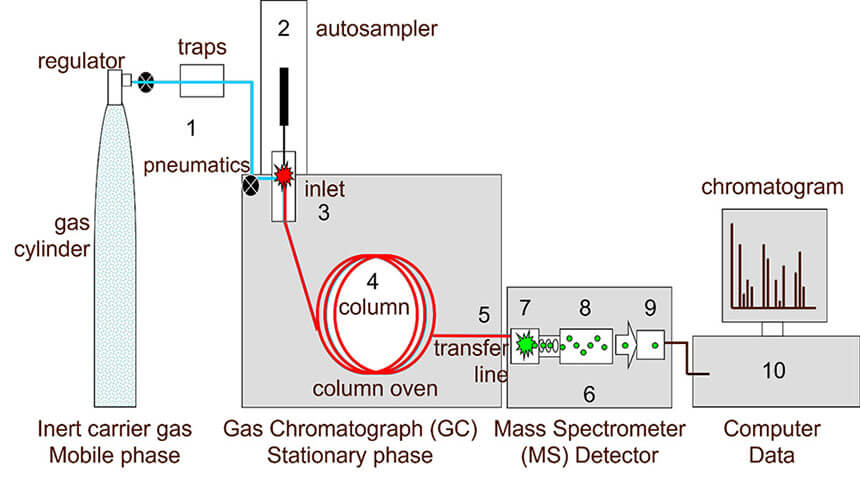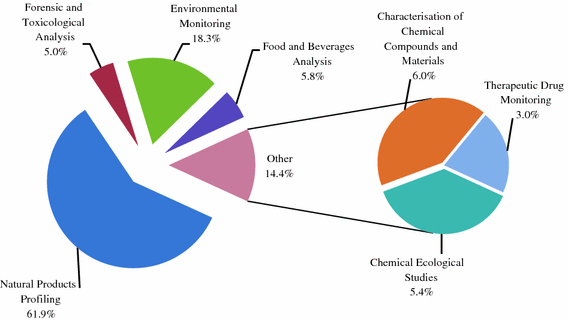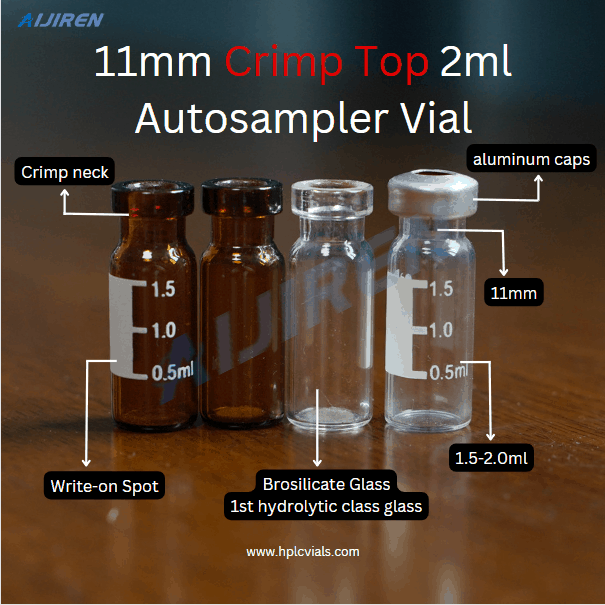Do you know GC-MS analysis?
What is GC- MS?

Gas chromatography-mass spectrometry (GC-MS) is a powerful technique for separating and detecting molecules. It is a widely-used method across different industries like forensics, pharmaceuticals, environmental analysis, and petrochemicals to detect volatile organic molecules or gases. In this article, we will discuss the operating mechanism of GC-MS, followed by its applications in the petrochemical field.
How does a GC-MS work?

GC-MS consists of a gas chromatograph and mass spectrometer. Once a sample is introduced into a gas chromatograph instrument, its various components are vaporized. Analyte properties such as volatility and polarity determine their affinity to the liquid stationary phase in the analytical columns. For instance, the non-polar stationary liquid phase is better at retaining and, hence, separating non-polar analytes. The physical dimensions of the column also affect how long the analytes are retained in the column and eventually eluted.
Once the analytes are eluted from the analytical column, they are then ionized, fragmented, separated, and captured as a function or spectrum of their mass-to-charge ratios by the mass spectrometer. The analytes’ identity is verified by comparing them to libraries of mass spectra of known compounds. The peak areas of the mass-to-charge functions also inform users of the relative quantity of the analytes.
What are the advantages of GC-MS?
GC-MS consists of a gas chromatograph and mass spectrometer. Once a sample is introduced into a gas chromatograph instrument, its various components are vaporized. Analyte properties such as volatility and polarity determine their affinity to the liquid stationary phase in the analytical columns. For instance, the non-polar stationary liquid phase is better at retaining and, hence, separating non-polar analytes. The physical dimensions of the column also affect how long the analytes are retained in the column and eventually eluted.
Once the analytes are eluted from the analytical column, they are then ionized, fragmented, separated, and captured as a function or spectrum of their mass-to-charge ratios by the mass spectrometer. The analytes’ identity is verified by comparing them to libraries of mass spectra of known compounds. The peak areas of the mass-to-charge functions also inform users of the relative quantity of the analytes.
The applications of GC-MS

Liquid GC-MS Typical Applications
1. Identification of unknown organic species and contaminants.
2. Analysis and quantification of mixed solvents and solvent waste streams.
3. Deformulation of chemicals and chemical products.
4. Polymer, paint coating, and rubber failure investigations.
5. Identification of organic contaminants or residual species coupled with FTIR and SEM/EDX or surface analysis techniques like XPS and SIMS.
6. Paint, adhesive, sealant, and gasket fingerprinting.
7. Qualitative and quantitative analysis of e-cigarette nicotine preparations and trace level contaminants.
8. Identification of residual cleaning or degreasing agent stains from poor cleaning or rinsing coupled with XPS and FTIR.
9. Analysis of oils and petrochemicals.
10. Characterization of antimicrobial coatings.
Headspace GC-MS Typical Applications
1. Analysis of real-world dirty samples.
2. Analysis of polymers and rubbers, volatile compounds and solvents, mobile species, plasticizers, stabilizers, and low molecular weight species.
3. Finished plastic products for assessment of the extent of curing, mold release agents, plasticizers, stabilizers, or other additives.
4. Identification of residual solvents from packaging.
5. Analysis of environmental volatiles in water.
6. Analyzing sources of odor in solid and liquid samples such as characterization and quantification of aroma components for food and beverages (e.g. Coffee, wine, etc.)
7. Diagnostic gas analysis from oils.
8. Identification of accelerants in fire damage residues or debris.
Additional GC-MS applications
GC-MS analysis has endless applications in material testing, identification, and certification. Additional GC-MS applications include:
1. Compound separations
2. Compliance certifications
3. Identify and quantify mixtures
4. Outgassing studies
5. Residual analysis
6. Debris/contamination identification
7. Impurities
8. RoHS testing
9. Plastic extractable
Conclusions
GC-MS is an advanced technique that cannot be compared with other modern analytical equipment but can be complemented by a mass spectrophotometer to achieve GC-MS/MS. It has a broad range of applications that caters to academic research, quality control as well as industrial applications. Its concise, efficient, automated system gives fast, reproducible, and effective results that serve a key role in the advancement of Science and Technology. This versatile analytical technique could be explored for better prospects in the future.
Back to List
-
 下午4:09Weighing the Pros and Cons of PTFE/Silicone Septa
下午4:09Weighing the Pros and Cons of PTFE/Silicone Septa -
 下午4:05Decoding Vial Discard Guidelines: Ensuring Precision in Chromatography
下午4:05Decoding Vial Discard Guidelines: Ensuring Precision in Chromatography -
 下午5:01Navigating Micro Inserts for HPLC Vials: A Comprehensive Guide
下午5:01Navigating Micro Inserts for HPLC Vials: A Comprehensive Guide -
.jpg) 下午2:02Common faults and solutions of automatic samplers(2)
下午2:02Common faults and solutions of automatic samplers(2) -
 下午5:08Ensuring Sample Integrity: Navigating EPA Storage Vials Stability Guidelines
下午5:08Ensuring Sample Integrity: Navigating EPA Storage Vials Stability Guidelines

